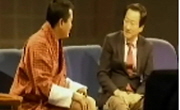개항 이후 한국사회에 등장한 종교-과학-미신의 3분법은 종교자유의 성격에 중대한 영향을 미쳤다. 근대문명의 지표로 등장한 종교자유는 법적 제도적 차원에서 자리를 확보했지만 종교-과...
http://chineseinput.net/에서 pinyin(병음)방식으로 중국어를 변환할 수 있습니다.
변환된 중국어를 복사하여 사용하시면 됩니다.
- 中文 을 입력하시려면 zhongwen을 입력하시고 space를누르시면됩니다.
- 北京 을 입력하시려면 beijing을 입력하시고 space를 누르시면 됩니다.
한국근대의 종교-과학-미신 3분법과 종교자유
한글로보기https://www.riss.kr/link?id=G3745024
- 저자
-
발행기관
-
-
발행연도
2016년
-
작성언어
Korean
- 주제어
-
자료형태
한국연구재단(NRF)
-
0
상세조회 -
0
다운로드
부가정보
국문 초록 (Abstract)
이러한 3분법은 공사이분법과 연계하여 종교는 사적 영역, 과학은 공적 영역에 각각 배치하는 반면, 미신은 두 영역 모두에서 척결되어야 할 대상으로 타자화했다. 따라서 근대사회의 종교는 공적 차원에 개입하지 않고 사적 차원에 머무는 한 무한한 종교의 자유를 지닌다는 것이 상식으로 자리잡았다. 그러나 이러한 상식은 재고되어야 한다. 근대국가는 과학의 이름하에 다양한 민간신앙을 미신으로 배척하는 동시에 ‘국민교육’을 통해 국가에 순응하는 주체를 생산하기 때문이다. 즉 국가는 체제에 위협적인 것으로 보이는 담론과 실천체계들을 미신으로 규정하는 동시에 국가 이데올로기를 과학의 이름하에 주입하는 방식을 통해 개인의 내면에 깊숙이 개입한다. 따라서 근대국가는 개인의 사적/내적 차원의 신앙에는 간여하지 않는다는 공사이분법은 단순한 수사(rhetoric)에 불과하다. 이러한 측면에서 볼 때 공사이분법과 맞물린 3분법이 작동하는 근대국가 체제에서 종교의 자유는 내재적 한계를 지니고 있는 것이다. 한국 근대에 나타난 종교자유는 이러한 성격을 잘 보여주고 있다.
개항 이후 한국사회에 등장한 종교-과학-미신의 3분법은 종교자유의 성격에 중대한 영향을 미쳤다. 근대문명의 지표로 등장한 종교자유는 법적 제도적 차원에서 자리를 확보했지만 종교-과학-미신의 3분법에 의해 그 범위가 제한되었다. 종교-과학-미신의 3분법에 의하면 종교는 개인의 판단에 맡겨진 ‘선택’의 영역이며, 과학은 누구나 받아들여야 하는 ‘사실’의 영역이며, 미신은 배제되어야 하는 ‘허위’의 영역이다. 수사적으로 표현하자면 종교는 선택과목, 과학은 필수과목, 미신은 기피과목이다. 식민지 한국사회의 경우 불교, 기독교, 교파신도는 ‘종교’, 신사신도는 ‘국가제사’(과학), 천도교와 같은 신종교들은 ‘유사종교’(미신)로 분류되었다. 요컨대 종교(불교, 기독교, 교파신도), 과학(신사신도), 미신(신종교, 민간신앙)의 3분법이 형성된 것이다.
이러한 3분법은 공사이분법과 연계하여 종교는 사적 영역, 과학은 공적 영역에 각각 배치하는 반면, 미신은 두 영역 모두에서 척결되어야 할 대상으로 타자화했다. 따라서 근대사회의 종교는 공적 차원에 개입하지 않고 사적 차원에 머무는 한 무한한 종교의 자유를 지닌다는 것이 상식으로 자리잡았다. 그러나 이러한 상식은 재고되어야 한다. 근대국가는 과학의 이름하에 다양한 민간신앙을 미신으로 배척하는 동시에 ‘국민교육’을 통해 국가에 순응하는 주체를 생산하기 때문이다. 즉 국가는 체제에 위협적인 것으로 보이는 담론과 실천체계들을 미신으로 규정하는 동시에 국가 이데올로기를 과학의 이름하에 주입하는 방식을 통해 개인의 내면에 깊숙이 개입한다. 따라서 근대국가는 개인의 사적/내적 차원의 신앙에는 간여하지 않는다는 공사이분법은 단순한 수사(rhetoric)에 불과하다. 이러한 측면에서 볼 때 공사이분법과 맞물린 3분법이 작동하는 근대국가 체제에서 종교의 자유는 내재적 한계를 지니고 있는 것이다. 한국 근대에 나타난 종교자유는 이러한 성격을 잘 보여주고 있다.
다국어 초록 (Multilingual Abstract)
This research explores the relationship between religious freedom and religion-science-superstition tertiary in modern Korea. This tertiary had an important influence on the scope of religious liberty in modern Korean society. According to that tertia...
This research explores the relationship between religious freedom and religion-science-superstition tertiary in modern Korea. This tertiary had an important influence on the scope of religious liberty in modern Korean society. According to that tertiary, science belongs to fact, religion belongs to belief, superstition belongs to fiction. Rhetorically speaking, science is compulsory, religion is optional, superstition is forbidden course. In colonial Korea, Buddhism, Christianity, Sect Shinto were regarded as religion, while State Shinto was recognized as science. New religions were stigmatized as superstition. In addition, public-private dichotomy placed science on the public sphere, positioning religion as private sector. Superstition was excluded from both public and private one. Therefore it is commonsense that everyone could enjoy religious freedom completely as long as they stay within private sphere. Such commonsense, however, needs to be abandoned. It is because modern nation states can control the inner dimension of people by excluding popular beliefs as superstition, while indoctrinating their own ideology into the people in the name of national education. In short religious freedom was limited by nation state in modern Korea.










